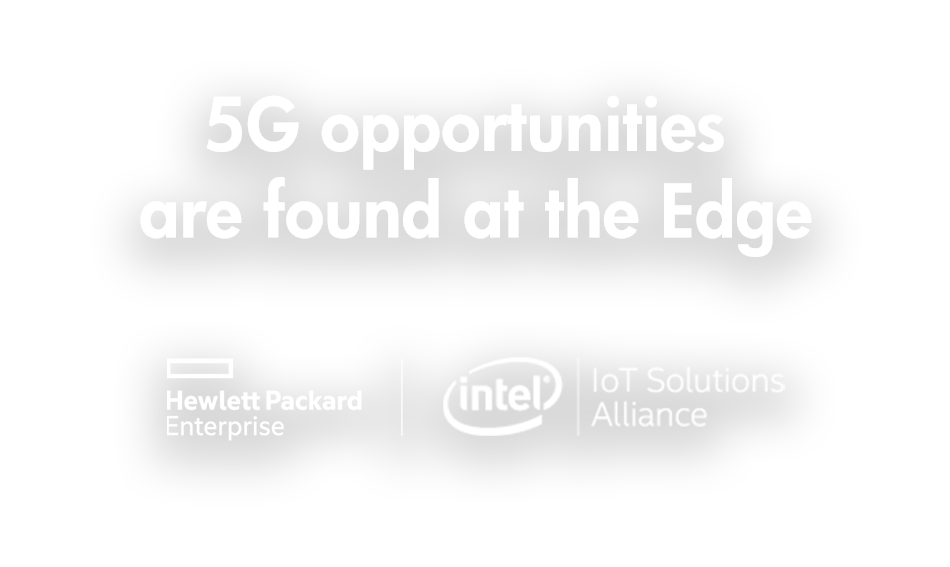

Pushing 5G all the
way to the Edge
![]()
Introduction
The ‘Edge’ is increasingly being seen as perhaps THE critical technology piece for telcos as they transition from being communications service providers (CSPs) to digital service providers (DSPs).
By implementing applications and service management from the edge of their networks, currently in transition to fifth generation cellular, they see themselves being able to meet both private user and corporate expectations for better, faster, more responsive, more reliable and more secure digital communications services.
The expectation is that this ability will see the mobile industry able to tap new sources of revenue from connected devices and specialist industry ‘verticals’, by adding value to connectivity services with features like service assurance underpinned by Service Level Agreements (SLAs), and by offering their own highly responsive cloud applications.
The development of an intelligent network edge is seen as key because it moves much of the telco network’s brainpower from shouting distance where it currently resides in the aptly named core – deep inside and far back from the customers it serves – to an intimate one or two data hops away. From there many things are suddenly possible which weren’t before.
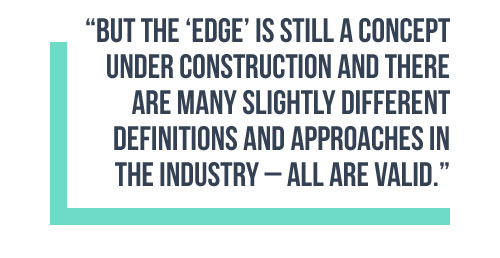
There will be several edges but this TelecomTV Perspectives is designed to lay out a
particular vision of the edge from the perspective of Hewlett Packard Enterprise which takes as its mission the construction of equipment and software for the telco or digital service provider edge.
What is the edge?
Overall, the ‘edge’ concept is well understood by TelecomTV subscribers – it’s the logical outcome of the evolution from the client-server world, which defined the classic centralized data centre, that evolved by virtualisation into the cloud and led to the decentralisation that we see today. The edge of the network is where the intelligence and many of the workloads will increasingly end up.
![]()
Why?
The mobile data network is still growing at a ferocious rate. According to the Ericsson Mobility Report, in the third quarter of 2018 mobile data traffic grew close to 79 percent year-on-year. That’s the highest growth rate since 2013. As the sheer volume of data increases, the pressure to process it faster and analyse it in real time grows too. That means more compute capacity must be built closer to the data sources at the network edge. The objective is to have data travel less far (and gobble less network capacity as it does so) and, as important, enable data analysis and response in close to real-time. This aspect is very important to support IoT applications, as well as many data-heavy applications, such as emerging interactive gaming, AR/VR tools and experiences.
What does it deliver in terms of specific technical advantages?
According to Tom Bradicich, VP & Hewlett Packard Fellow, Global Head of Edge and IoT Labs & CoE at Hewlett Packard Enterprise, there are at least seven big benefits to Edge technology and applications.
- Top of the list has to be Latency: Lower latency is good for the general-purpose mobile experience (voice calls, the responsiveness of cloud applications) but is even more important for some mission-critical applications. 5G will improve latency but it can’t absolutely guarantee it. Edge compute can.
- Bandwidth: Sending data from edge devices to the cloud or a data center uses up loads of bandwidth – that can be curtailed by dealing with much of it at the edge.
- Compliance: Using the edge to avoid the regional transfer of data where it’s not allowed.
- Security: The less the distance data is sent, the less vulnerable it is to attack.
- Cost: Bandwidth and security both cost money.
- Duplication: If you are going to collect data and send it to the cloud there will inevitably be some duplication. Edge compute can intercept some of it and save money.
- Data corruption: Even without any nefarious activity from hackers, long journeys from edge-to-data-center make it more likely that data will be corrupted on the way.
![]()
Where should an ‘edge’ be positioned?
The ‘edge’ for that processing could be at the boundaries of the telco or other public network:
OR at an intermediate node between network edge and scaled up data centre
OR at the corresponding edge of an enterprise
OR where the edge could be defined, not by a physical network, but as the boundaries of a virtual network striped across multiple clouds, public and private. Eventually the actual ‘edge’ (the first and last stop for data generated by and for an application or service) could theoretically be devolved to the user device. In that guise the underlying infrastructure would be the logical eventual destination of the ‘hybrid’ cloud running cloud native software based on microservices and containers.
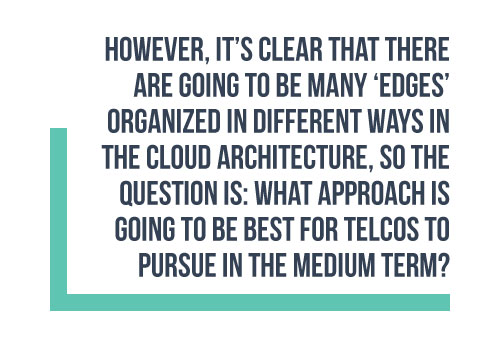
We enlisted telecoms network technology specialists at Hewlett Packard Enterprise (HPE) to explain how best to understand the edge and what technologies and approaches telcos should be deploying there. I spoke with Jeff Edlund, Chief Technology Officer, Communications & Media Solutions, Hewlett Packard Enterprise and edge expert Alex Reznik, Chair of the ETSI Multi-access Edge Computing ISG and HPE Distinguished Technologist.

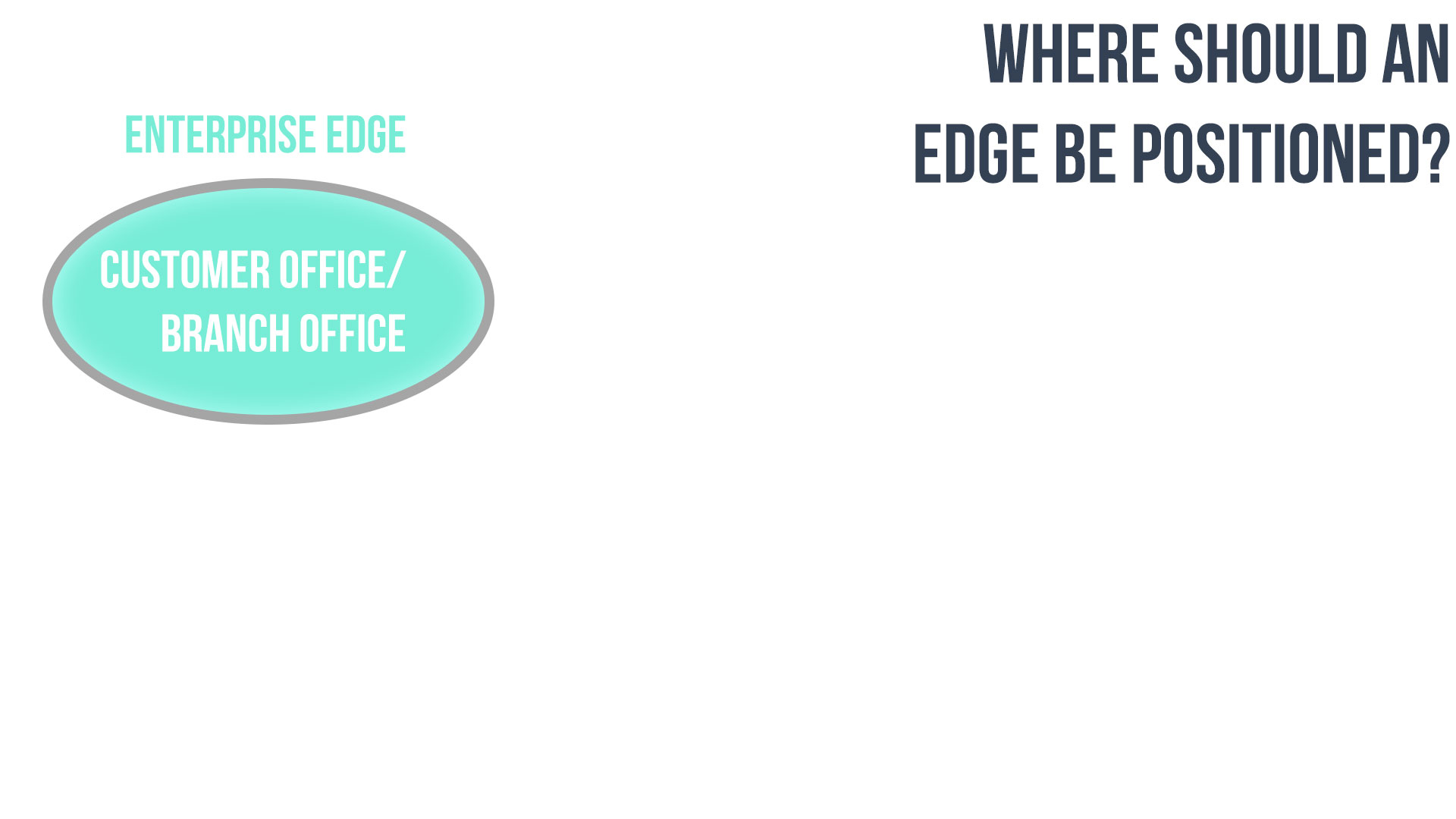
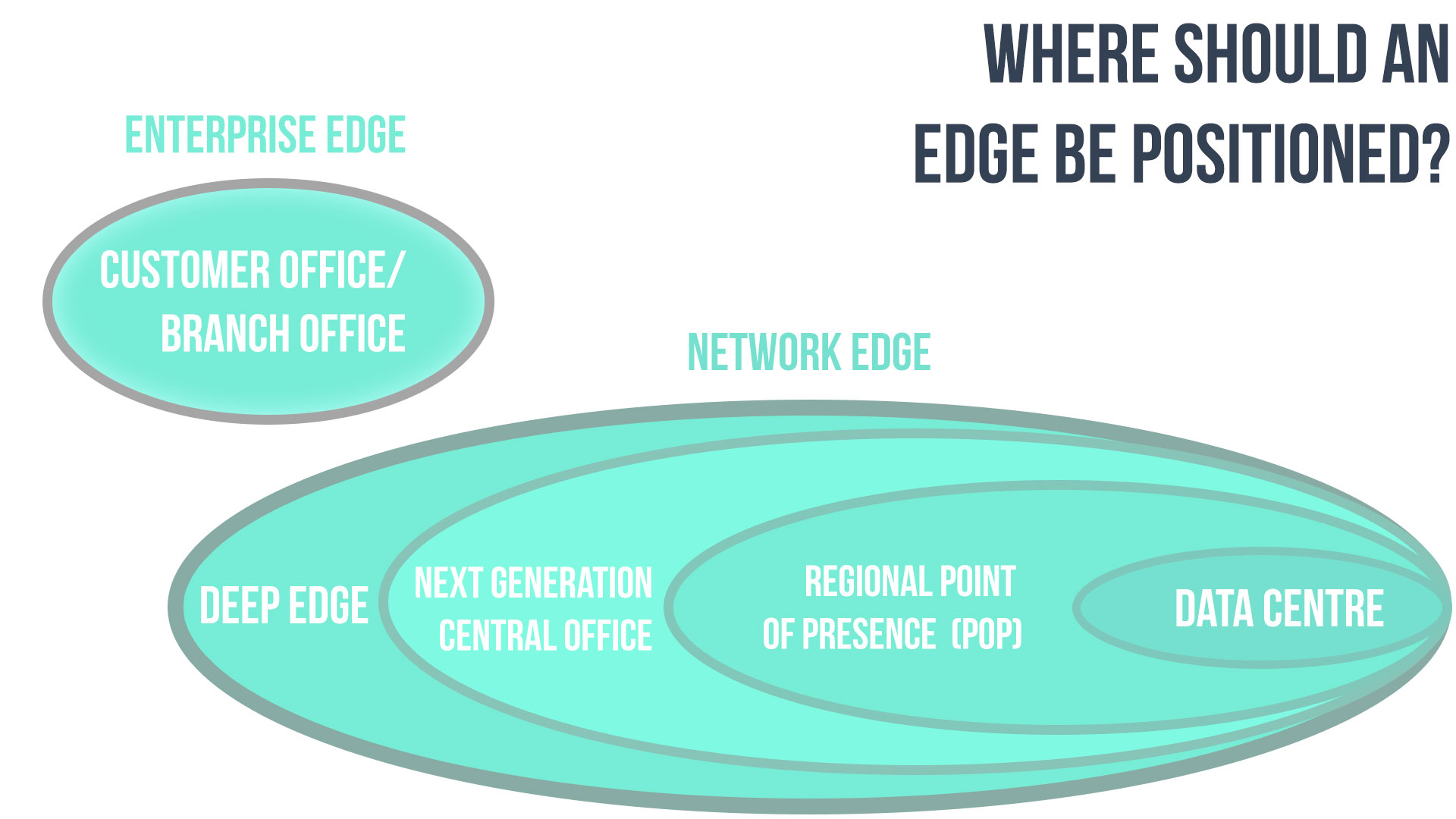
The HPE view
HPE’s perspective is that telco networks are currently undergoing a two-stage evolution, in order to deliver on the promise of 5G.
First, it says, telcos must virtualize their core networks to create a 5G Cloud. That involves a complete architectural change for their data centers and network, evolving them from the old proprietary, black-box infrastructure into an open-standard, IT service-based architecture resulting in a highly distributed, secure, fully virtualized, heterogeneous, multi-vendor cloud.

Telcos then have to embrace the Intelligent Edge through the decentralization of their data traffic away from the core and a move for data processing and network functions to as close as possible to where data is being generated: at the Telco Edge.
The kicker (more on this later) is that this can only be done by adding intelligence to the edge sites, so that Edge Compute can make more efficient use of IT resources, free up network capacity and will effectively extend 5G network functions from the core all the way to the Telco Edge.
There must also be another big break from the past. Instead of technology rivalry there must be 5G New Radio coexistence and collaboration with enterprise Wi-Fi and other networks and network protocols. This will be critical for the delivery of 5G features at indoor Enterprise environments, both for mobile devices (smartphones etc) and IoT devices.
5G standard specifications explicitly include Wi-Fi 6 as one of the supported protocols in the larger umbrella; likewise, Wi-Fi 6 (otherwise known as the latest IEEE protocol release 802.11ax) is also integrating support for 5G connectivity. (See our companion Perspectives: Why 5G and Wi-Fi-6 are becoming best of friends and why everyone’s a winner).
Embracing the Intelligent Edge, particularly as it relates to the convergence of 5G New Radio with Wi-Fi 6, is an exceptional step for CSPs to ensure the delivery of 5G into a myriad of Enterprise environments where there already exists an enterprise network.
We first spoke with Jeff Edlund, Chief Technology Officer of the Communications Media and Solutions (CMS) organization within Hewlett Packard Enterprise, who further outlined the HPE edge ‘perspective’.
So first off, we asked, “how does HPE view the current diversity of cloud approaches and the edgeless cloud?”.
“Like everybody else we currently see the hyperscalers bringing their cloud down as far as they can,” says Jeff. “I guess that’s one vision of what an edgeless cloud can be, and we see companies trying to position themselves somewhere in the cloud ecosystem from the core cloud to the edge.”
![]()
Where does HPE sit in the edge landscape?
“HPE has a practical perspective for what we see emerging as a hybrid cloud world. We believe in hybrid because now most accept that rather than everything just going into the undifferentiated cloud, there are computational, data and latency reasons as to why you need to push the cloud as close to the edge as you possibly can and make informed determinations from there about where you put things,” he says.
So where workloads are located is important, and the Edge gets particular traction where the imperative is to speed things up in both directions by getting data in, analysing and producing insights in near real-time, and returning it as command and control instructions. Jeff maintains that HPE essentially founded a new product category to handle these tasks with its Edgeline Converged Edge Systems. These integrate and converge the OT Systems (control systems, data capture systems, industrial networks) and shifts ‘uncompromised’ enterprise-class IT systems, from the data center out to the edge. The systems perform operations that actuate and control “things” at the edge and – importantly – enable customers to deploy a single integrated platform that contains both physical and virtual OT systems along with enterprise-class IT.
Mastering signalling and control
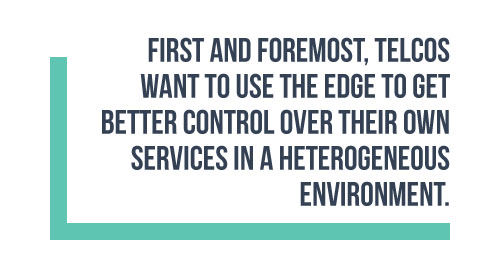
“Telcos have been running down the road of CUPS (control point/user point separation) and they’ve been re-architecting their central offices as data centers,” says Jeff. “They’ve started to push processing loads out from the core to the first level of edge, if you like – the Central Office (or local exchange in the UK). So we’ve seen things like the evolved packet core (EPC) or their mobility management entities sitting out there.
“There are other edges to consider too, and if we look at the way a 5G network is constructed there’s going to be opportunities to have an edge that I would call a “deep edge”, that’s probably co-located with or right next to the radio access network. There’s also opportunities to place edges all the way down into the enterprise, depending upon what the business case is that you want to manage.”
Jeff says that the primary difference between the telco cloud edge and the hyperscale edge is that the hyperscale guys want to push their edge out as far as they can and they’re thinking, ‘How can I make the cloud at the edge look exactly the same as the cloud I’m already presenting to the customer.’
“The telco, however, thinks of it beyond just compute and storage,” says Jeff, which is why they are adhering to multi-access edge compute (MEC) model and that brings in new possibilities. For instance, with 5G as the umbrella network, user equipment or devices are able to have the telco service control select the best network available at any particular time. That means transparent support for Wi-Fi 6 or private LTE as well as 5G.
So how do you define the edge?
For HPE Distinguished Technologist and MEC advocate Alex Reznik, there’s another more binary way of expressing what an Edge is and how it may be best defined to make sense of the applications and network architectures that attach to it.
“There’s many definitions of the edge,” he claims.
“For a content delivery network like Akamai Technologies, it might be ‘where we go and place our server in an ISP’s network’.”
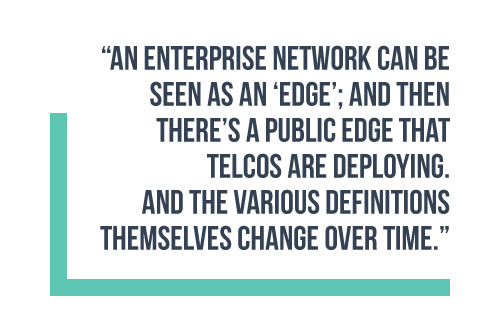
Alex has come up with a broad catch-all definition of his own which he thinks makes the point. “Think of a data centre – large or small – a purpose-built room locked, air filtered and air conditioned with racks of stuff humming away. So anything that’s not in there and is not a client device is an edge! You step out of the data centre and you’re on the edge. Any data or workload that wanders out of a data centre is on the edge.”
Lodge that idea in your head and everything starts to make sense where it might not have before. He’s saying that when your data has left the safety of the data centre it has new requirements and you, as its manager, have new responsibilities. You need to be thinking about ‘environmentals’, security, you have to get your head around how you manage a large operational network in terms of workloads and where to put them. It’s not something you deal with at all when your data workloads are not at the edge, but safely cocooned in the cloud.
A very important edge use case is customer premise equipment, he says. “Customers are saying to the telco, look, you put this box in my closet on-site, why can’t I house data and workloads on that and you manage it for me as part of our contract. But that’s just not going to work. The environment of the on-premises cupboard where the network hub is sharing space with a mop and a broom, does not a virtual environment make. Microservices need to instantly find alternate routes for their data, for one thing. They need to be highly resilient and secure.
“The whole industry is struggling with edge definitions, says Alex, but I maintain that if you think of it in the negative – as cloud outside the data centre environment, then it clarifies a lot of problems in understanding. “
![]()
How to put the technology to work
The edge also gifts telcos the ability to offer high performance, low latency applications to its enterprise customers, perhaps in competition or in partnership with third party application providers. With HPE’s ‘intelligent edge’ technology embedded in the Edgeline Converged Edge Systems, it has the ability to help telcos use their ownership of the edge to tap the value of the distributed cloud and climb the digital value chain to generate revenue streams they haven’t been in a position to tackle before.

Another important strand, for similar reasons, is to support to autonomous driving applications by setting up communications so that vehicles can inform each other in split seconds about problems on the road ahead that may have occurred only seconds before. The intelligent responsive edge can take vehicle autonomy and safety up a whole level.
There are bound to be many more and they will emerge as 5G and other high-speed broadband services roll out.
These may be enterprise applications that have a particular ‘local quality’ – detailed and highly responsive maps, for instance. Local newspapers or business applications.
Autonomous vehicle applications are a good example too. The telco edge can provide the ultra-responsiveness and reliability – low latency enabled by the ‘edge’ is going to be key.
![]()
What does HPE bring to the edge party?
“We bring a full stack to enable the ‘things’ at the edge that either a CSP or an enterprise needs in order to run their business,” says Jeff.
“We’ve got our CMS (Communications & Media Solutions) competency and our Aruba
(Wi-Fi 6) competency and that means that we can do some really interesting things for the industry: like drive the
standards that will allow things like service policy to be shared from the network to both New Radio and Wi-Fi 6 endpoints. That in turn means we can greatly improve interworking between 5G and Wi-Fi 6 on things like call handoff,
prioritisation, multi-path TCP, proper radio selection and so on.
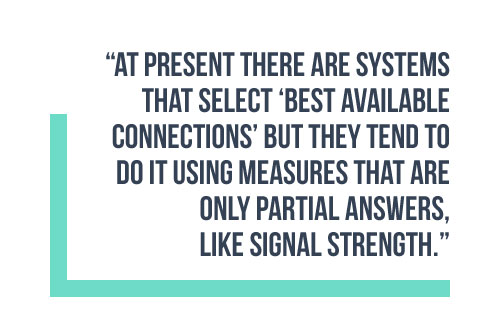
The logic of 5G and Wi-Fi 6 working together is that the system will track a Wi-Fi connection to the edge of its own network and then organize the handoff to 5G, rather than just rely on the Wi-Fi device to camp on by itself. Also, the operator gets full visibility of the Wi-Fi service and can collect the handset data on network and application performance.
With the development of the edge there is a unique opportunity to position advanced technology – like HPE’s Edgeline and its other edge infrastructure such as its storage and compute – to bring the enterprise and its cloud-hosted applications closer together to create snap-fast responsiveness.
In conclusion, then, what should telcos be doing to prepare for the 5G edge opportunity?
“If I were a telco,” says Jeff, “I would start now, with or without a full 5G cloud or even a partial rollout of New Radio, and the starting point should be private communication with LTE – licensed or unlicensed – it doesn’t matter.”
Jeff says he would work on delivering a private communications slice for enterprises and would start by deploying low latency edge services on 4G. This should give a telco a good chance of intercepting early adopting customers and learning important lessons on the way.
In terms of peace breaking out between Wi-Fi 6 and 5G now that 5G is expected to ‘englobe’ other network protocols, both sides have to ensure they don’t go stepping on toes. Competing needlessly should be avoided.
“This is huge,” says Jeff. “All the network access methods can fall under 5G, so when you think about campus and in-building, well that’s already Wi-Fi and soon to be Wi-Fi 6 territory. It would be a mistake for CSPs to think that they’re going to come along and replace in-building Wi-Fi with 5G new radio.” As Wi-Fi 6 takes hold its capabilities simply make such a move unnecessary in any case.
“At the same time it would also be a mistake for the Wi-Fi vendors not to embrace new 5G standards which will basically enable their Wi-Fi systems to have access to the 5G service-based architecture through a well-defined gateway – and deliver a good experience to the user, rather than pot-luck.
Alex Reznik thinks HPE has got off to a flying start with the edge.
“I think HPE is today the leading provider for true cloud infrastructure for those kinds of environments and that’s where we want to be: “outside the data center cloud infrastructure, which we define as edge.”
In conclusion, then, what should telcos be doing to prepare for the 5G edge opportunity?
“If I were a telco,” says Jeff, “I would start now, with or without a full 5G cloud or even a partial rollout of New Radio, and the starting point should be private communication with LTE – licensed or unlicensed – it doesn’t matter.”
Jeff says he would work on delivering a private communications slice for enterprises and would start by deploying low latency edge services on 4G. This should give a telco a good chance of intercepting early adopting customers and learning important lessons on the way.
In terms of peace breaking out between Wi-Fi 6 and 5G now that 5G is expected to ‘englobe’ other network protocols, both sides have to ensure they don’t go stepping on toes. Competing needlessly should be avoided.
“This is huge,” says Jeff. “All the network access methods can fall under 5G, so when you think about campus and in-building, well that’s already Wi-Fi and soon to be Wi-Fi 6 territory. It would be a mistake for CSPs to think that they’re going to come along and replace in-building Wi-Fi with 5G new radio.” As Wi-Fi 6 takes hold its capabilities simply make such a move unnecessary in any case.
“At the same time it would also be a mistake for the Wi-Fi vendors not to embrace new 5G standards which will basically enable their Wi-Fi systems to have access to the 5G service-based architecture through a well-defined gateway – and deliver a good experience to the user, rather than pot-luck.
Alex Reznik thinks HPE has got off to a flying start with the edge.
“I think HPE is today the leading provider for true cloud infrastructure for those kinds of environments and that’s where we want to be: “outside the data center cloud infrastructure, which we define as edge.”
“I believe that HPE is going to be the leader there and we’re making a huge, huge bet on this. If you look at some of the moves we’ve done with the Edgeline - it is really designed to address that space.”




